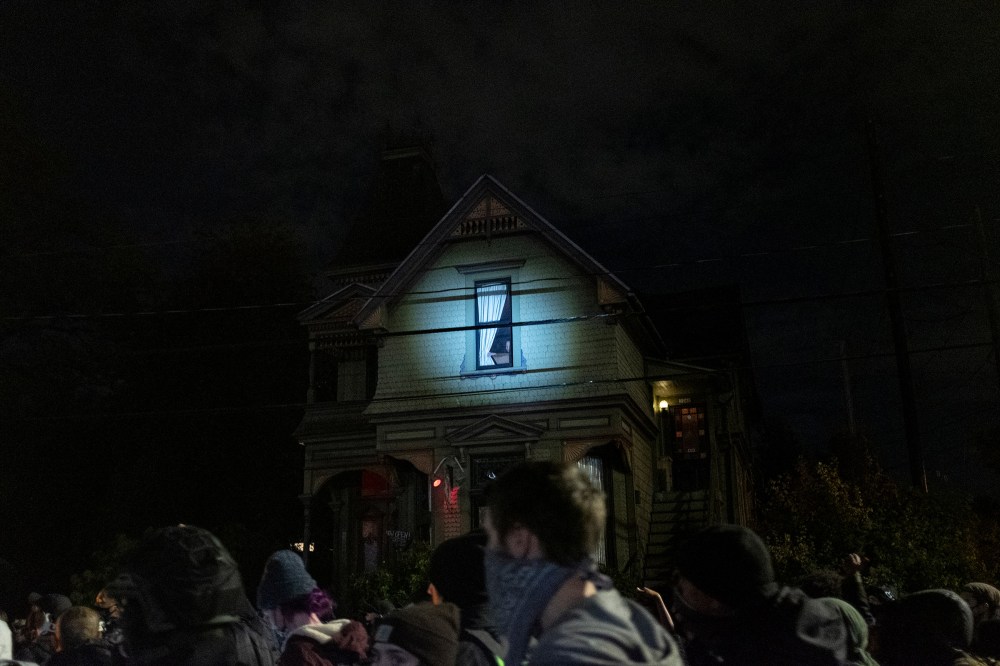They TikToked, they led marches and they stepped up as poll workers in their communities. Now, they’ve helped tap the next President of the United States.
After a contentious race, former Vice President Joe Biden is headed to the White House with the most votes cast for any presidential candidate in American history — and he’s got millions of young Black, Latino and Asian voters to thank for that distinction. Not only was youth voter turnout in this election the highest in over 100 years, youth of color backed Biden in several battleground states including Pennsylvania, Michigan and Arizona, according to new analysis of voting data.
Tufts University’s Center for Information and Research on Civic Learning & Engagement (CIRCLE), which researches youth civic engagement in the U.S., analyzed the young electorate’s role in this election and found that 73-87% of Black, Asian and Latino voters between age 18 and 29 voted for Biden, compared to the 45-51% support from young white voters. In both Pennsylvania and Michigan, more than 75% of young voters of color voted for Biden.
“If they went more towards Republican or came out in lower numbers in some of these states by just a few percentage points, it could have gone the other way,” says CIRCLE team director, Kei Kawashima-Ginsberg.
According to CIRCLE’s analysis, Black and Latino youth also had a significant impact on Biden’s gains in Georgia and Arizona, both states that President Donald Trump won in 2016. In Georgia, where the race remains tight and a winner has yet to be projected, Biden received 90% of Black youth support, according to CIRCLE’s analysis, bringing in nearly 188,000 more total youth votes than Trump. In Arizona, which Associated Press has called for Biden though votes continue to be counted, 62% of youth voted for Biden, compared to 34% for Trump. Young Latinos in this traditional GOP stronghold were 15% more likely to support Biden than young white voters.
Make sense of what matters in Washington. Sign up for the daily D.C. Brief newsletter.
Young Americans have not been reliable voters in past presidential elections. During the upsurge of protests over racial injustice this summer, politicians and critics of the demonstrations questioned whether youth participation in the massive civic movement would translate into stronger engagement at the polls in November. What’s now clear, says Kawashima-Ginsberg, is that it did. “The myth of them being on the street instead of them voting didn’t pan out,” she says. “It’s been such an active electorate.”
For many within this demographic, getting another white septuagenarian man into the nation’s highest office was not what moved them to action. On social media, many young Americans who have felt underrepresented by political candidates said they finally saw themselves in Vice-President elect Kamala Harris, who will be the first woman, the first Black American and the first Asian American in U.S. history to hold her position.
“I can’t explain how uplifting it feels to be represented by Kamala,” wrote Karsten Daniels, a 20 year-old California student in a tweet. “ I feel even more excited and hopeful to run for office in my career.”
Madeline Khare, 24, tweeted, “I bawled during Kamala’s speech. This is the most impactful biracial, South Asian female representation I have ever seen. And as a biracial, South Asian female who never saw myself in media, you have no no idea what that means to me.”
In the run-up to the election, both national and local get-out-the-vote organizations worked hard to get youth of color, a group that has been disproportionately impacted by voter suppression tactics, out to the ballot box.
In the wake of Russia’s meddling of the 2016 election and the President’s repeatedly raising unsupported concerns over this year’s increase of mail-in-voting due to COVID-19, many young voters of color lost confidence in the electoral process, according to the CIRCLE. The group’s data found, for instance, that 44% of non-white young voters still had concerns of foreign election interference, the highest amongst their age demographic.
The recent get-out-the-vote push is part of a broader effort that’s been happening nationally in battleground states. NextGen America, a progressive non-profit founded by Democratic presidential candidate Tom Steyer, has registered over 1.6 million young voters across swing states since 2014. This year, NextGen focused on getting all eligible young voters out to vote, including the more than 800,000 Latinos that have turned 18 since the last presidential election.
The group reached out to over 1.3 million young Latinos with calls, texts and digital ads across the country, according to executive director Ben Wessel. In the end, young Latinos in states like Nevada and Arizona came out in waves for Biden. In Nevada, Biden had another double-digit youth vote lead over Trump, with 18 to 29 year-olds making up the largest share of Latino voters in the state, according to Latino voter registration organization, Voto Latino.
“Two elections in a row now, we’ve seen a youthquake that completely shakes the pillars of how our politics have been built,” says Wessel. “I think that every Democrat, Republican or independent who’s running for office needs to recognize that Gen Z and Millennials are the most important political force in our country now.”
from TIME https://ift.tt/3niEaHf










































